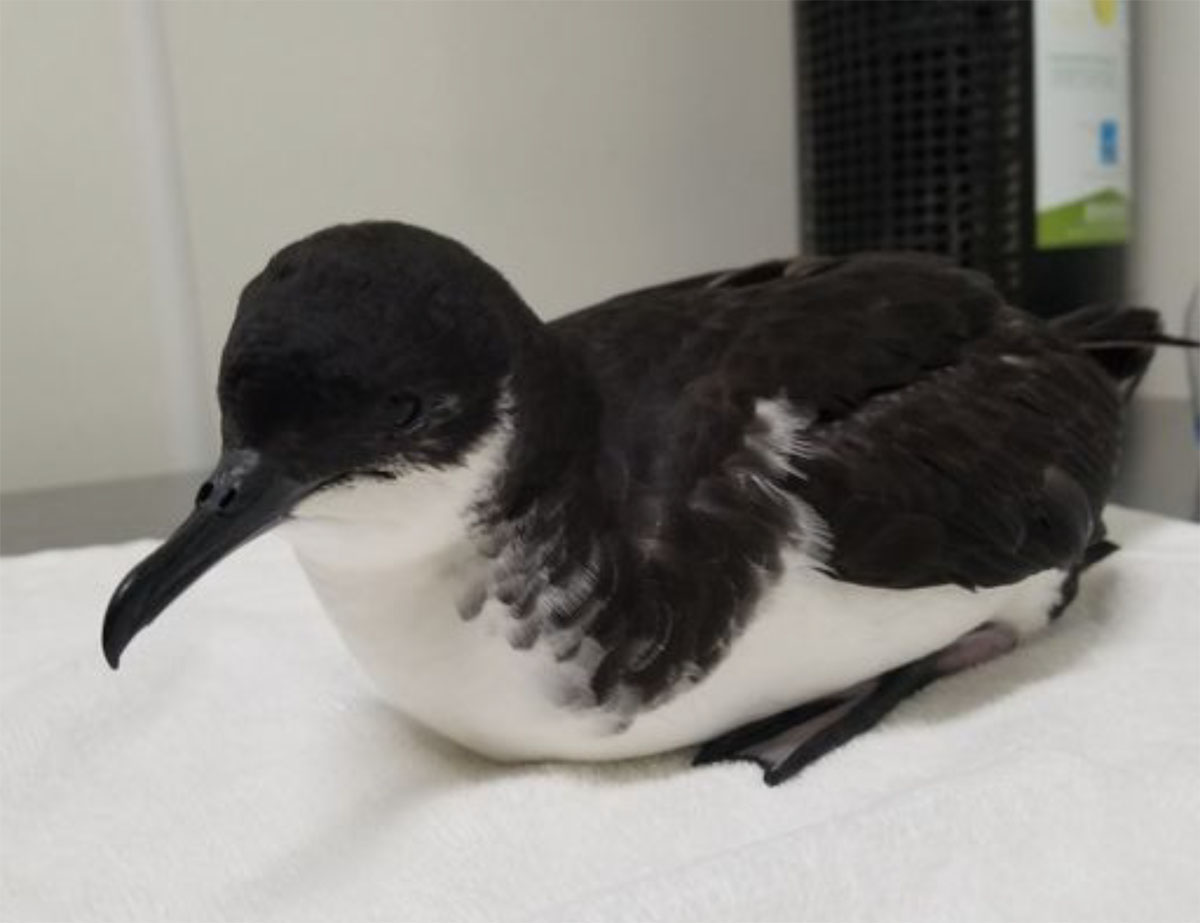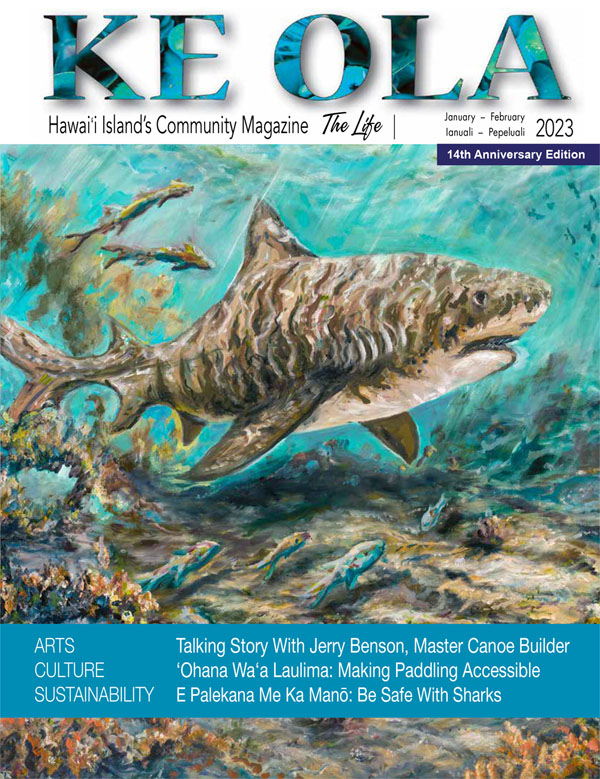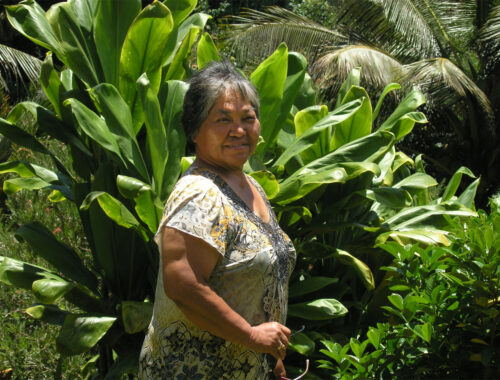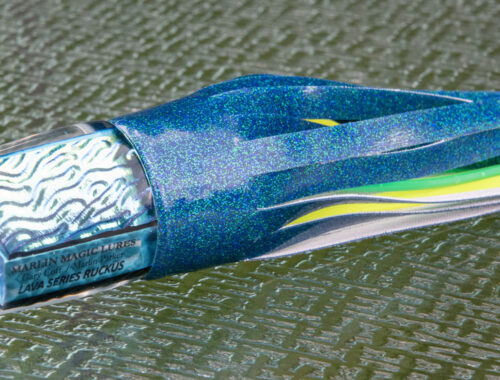
Mālama Mokupuni: Caring for Our Island Environment — A Rare Night Visitor: ‘A‘o, the Newell’s Shearwater

By Rachel Laderman
The strange, croaking-squawking calls started in August. Was it a sick chicken? A keiki’s squeaky toy? A lost donkey? I asked neighbors, I did a web search. I stayed up to listen closely: it had to be a bird. The sound came and went. It first called just after dark, flying in from the ocean, and then again at 4:30am, circling for an hour—calling loudly.
Finally, I searched the web for “brays like donkey night bird Hawai‘i” and there it was: “‘A‘o, Newell’s Shearwater, 30-to-35-inch wingspan. Black top with a white underside… breeds only in Hawaiian Islands, mainly in highlands of Kaua‘i. Listed as threatened under Endangered Species Act. Nocturnal with a call that sounds like a braying donkey,” according to Hawai‘i Marine Animal Response.
I emailed a recording of the bird to the Department of Land and Natural Resources Division of Forestry and Wildlife (DLNR-DOFAW), where Ian Cole responded, “It’s a Newell’s!” This was very exciting, because Hawai‘i Island’s number of ‘a‘o are very low, and our area off the southern Hāmākua coast is not known to be one of their few breeding sites.
Plummeting Numbers
‘A‘o are one of several endemic colony-forming seabirds, once so plentiful they darkened Hawaiian skies when returning at night to their breeding burrows. In the last century, due to hunting and predation from rats, cats, pigs, and mongoose, the birdʻs population crashed; ‘a‘o were thought to be extinct statewide from 1908 to 1947.
Their population on Hawai‘i Island is now estimated to be in the low hundreds, but according to Alex Wang, wildlife biologist for DLNR-DOFAW, because of their nocturnal habits, it is not well known. Jay Penniman, manager of the Maui Nui Seabird Recovery Project, thinks the status of the ‘a‘o is actually endangered, rather than threatened, a more serious level of concern and one given the bird by the International Union for Conservation of Nature.
‘A‘o spend the first six or seven years of their lives at sea, only returning to land to breed from April through October. They usually choose steep, mountain slopes, under dense cover such as uluhe ferns. With their beaks and feet they dig a burrow, and lay a single egg in June. Most chicks fledge by November, and are on their own, flying far out to sea to pursuit-dive, meaning they dive, then use their wings for propulsion underwater.
The Importance of Guano
“Seabirds are really important ecosystem engineers,” says Steve Hess, National Wildlife Research Center, USDA. “They bring in tons of nutrients from the ocean to their nesting colonies on land. Ancient agriculturists didn’t need to add fertilizer because guano was so abundant all over the mountain.” Steve adds that guano, or seabird excrement, was the finest fertilizer available in the 1800s, and is the reason the United States created the 1856 Guano Island Act—to claim islands and mine them for guano. Few fertilizers were available before the invention of synthetic fertilizer in 1903; seabirds provide it for free.

Once Out of the Burrow, More Dangers Ahead
When the fuzzy-headed ‘a‘o fledglings emerge from their burrows in the mountains, having survived the dangers of predators, they take flight towards the sea, navigating by the moon. ‘A‘o then face a serious problem. Bright artificial lights look like the moon, and some circle until exhausted, and fall to the ground. In one fledgling season alone, the Kaua‘i Save Our Shearwater program picked up 2,000 downed ‘a‘o. Powerlines, fences, and wind turbines are also dangerous obstacles that can hurt or kill ‘a‘o.
Our visitor may have been “prospecting,” seeking out a good nesting site, Jay suggests. Maybe it will be back in April, but it won’t be safe.
How to Help
There is hope of bringing back colonizing seabirds by creating sanctuaries that exclude predators.
- Ask your senators to pass the Recovering Americas Wildlife Act, for funding predator-proof fences to provide safe havens for ‘a‘o and other threatened Hawai‘i Island species.
- If you spot a rare native bird (or think you hear a donkey braying late at night), contact Hawai‘i County DLNR-DOFAW at 808.974.4221. Biologists can use this information to work towards protecting nesting areas.
- Use seabird-safe lights that face downward and have less than two percent “blue” content at your home or business.
- Keep cats indoors.
- If you find a grounded seabird, for rehabilitation contact: hawaiiwildlifecenter.org. ❖
Rachel Laderman’s articles are sponsored thanks to Lynker Sustainable Pacific Program, Hawai‘i Island.



